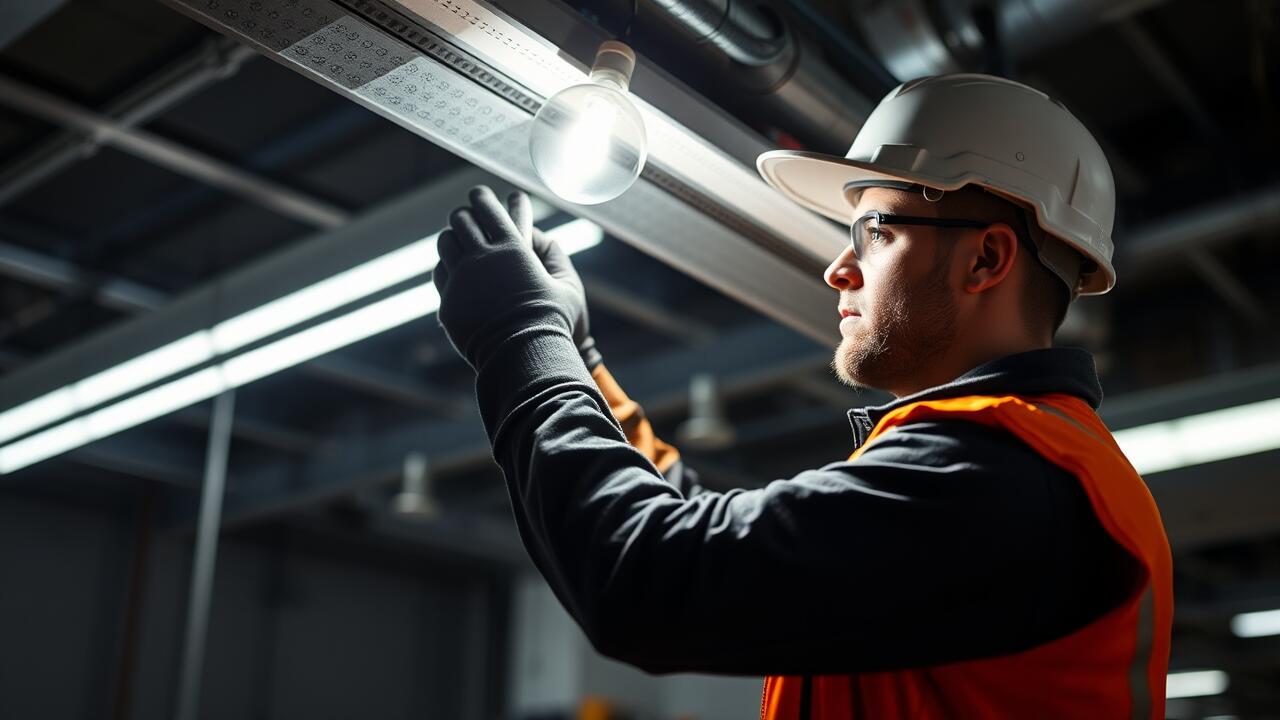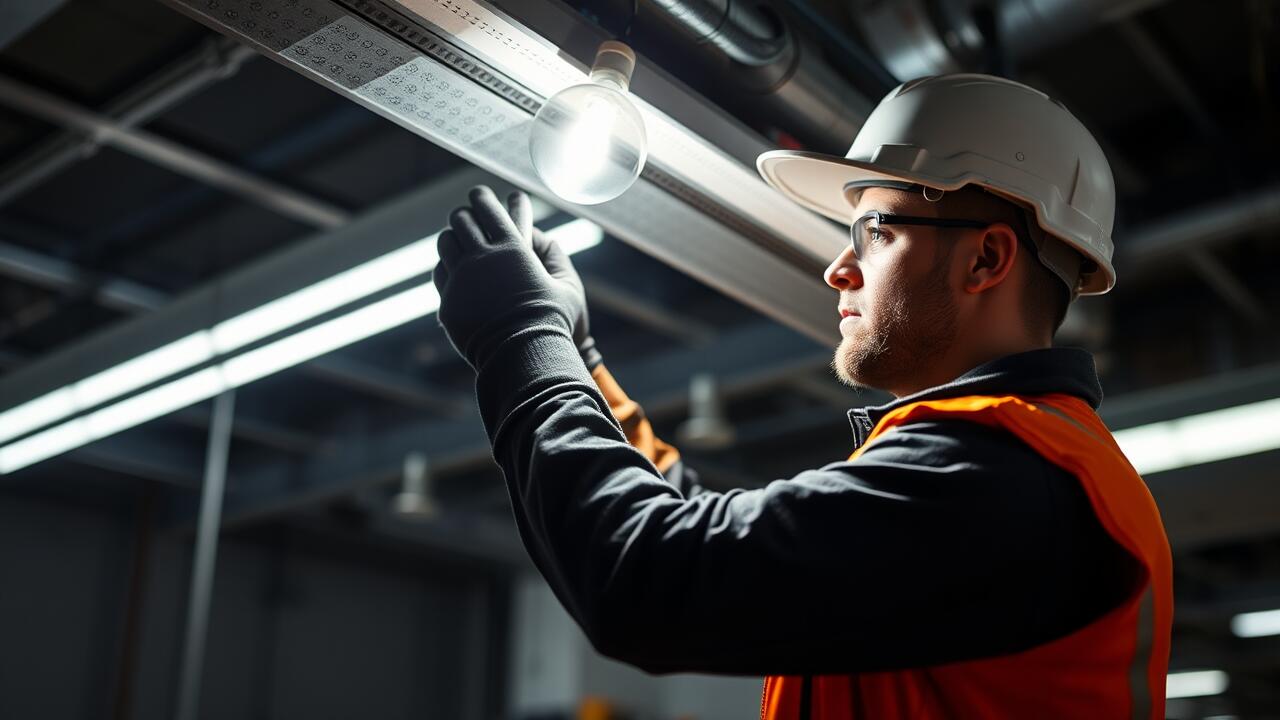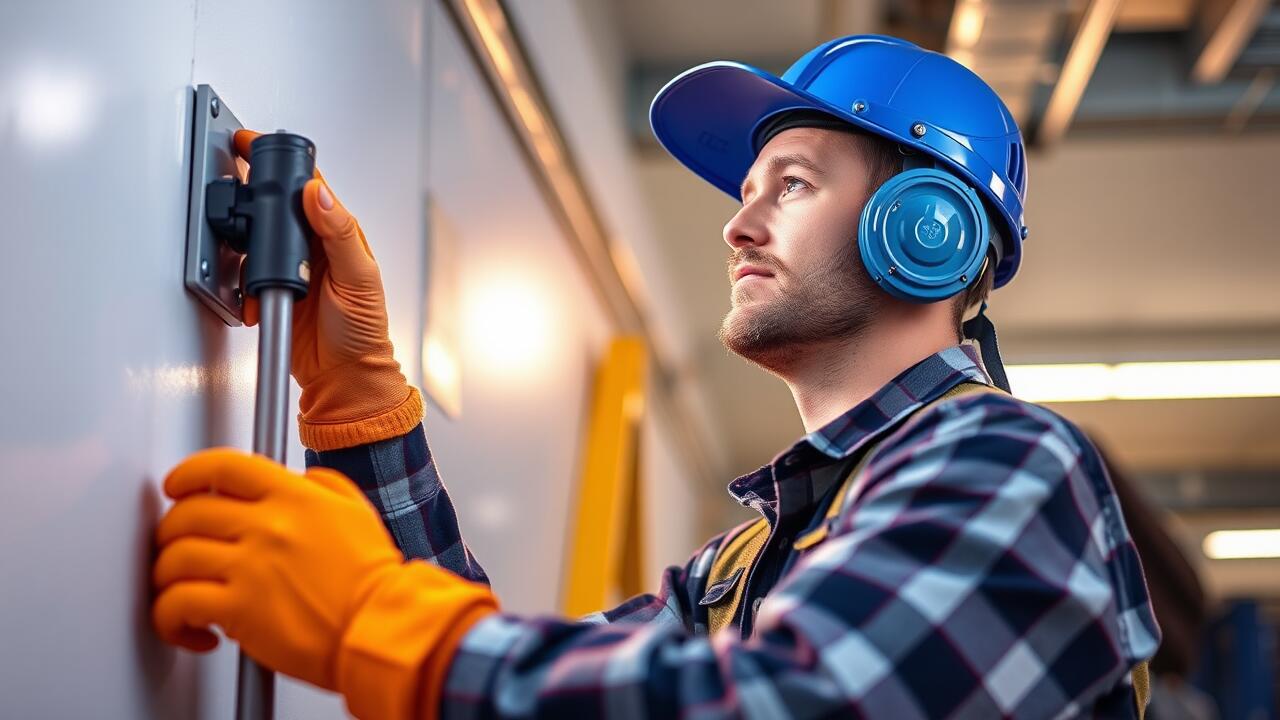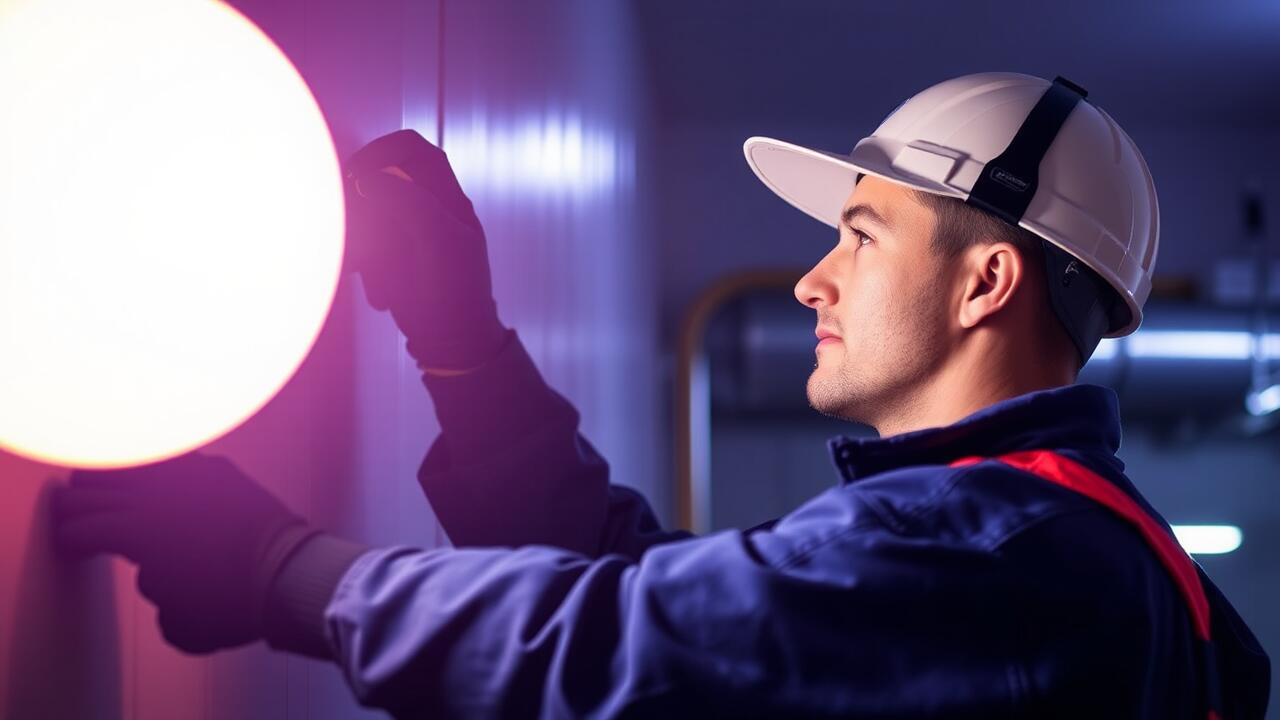
Installing Recessed Lighting in Ceilings
Recessed lighting can significantly enhance the ambiance of a room when installed correctly in ceilings. Begin by selecting the appropriate recessed lighting fixtures based on the size of the space and the desired light output. Mark the locations on the ceiling where the fixtures will be installed, ensuring the spacing is consistent and suits your lighting needs. Properly measuring the distance from the walls can help achieve a balanced look. It is essential to account for any joists or ductwork within the ceiling to avoid obstacles during installation.
Once you've marked the spots, you can proceed with cutting out the holes for the fixtures. Use a drywall saw, and be sure to wear safety goggles to protect your eyes from debris. After cutting, the next step is to secure the housing of the recessed lights into the ceiling. Follow the manufacturer’s instructions closely to attach the housing correctly. If you’re in need of professional assistance, consider reaching out for Lighting Installation Bellaire West, Houston, as they can provide expertise and ensure a polished finish in your ceiling lighting project.
Step-by-Step Guide for Ceiling Installations
Choosing the right location for the recessed lights is the first step in the installation process. Mark the spots on the ceiling where the lights will be installed, ensuring they are evenly spaced for an aesthetically pleasing look. Use a stud finder to avoid areas with electrical wires or plumbing. Once marked, it's time to cut holes in the ceiling using a drywall saw. The size of the holes should match the diameter of the recessed light housings.
After making the holes, the next step involves running the electrical wiring in accordance with local building codes. It is essential to connect the wires securely to the fixtures. Follow the manufacturer’s installation instructions for proper connections. Once everything is connected, insert the recessed light housings into the holes and secure them according to the specific guidelines. For professional results, consider hiring Lighting Installation Westchase, Houston, to ensure that everything is done safely and efficiently.
Wiring Recessed Lights
Wiring recessed lights is a crucial part of the installation process. Understanding the electrical connections needed for recessed lighting ensures a safe and efficient setup. Before beginning, make sure to turn off the power at the circuit breaker to prevent any electrical hazards. It’s advisable to use a wiring diagram specific to your lighting fixture to guide the installation. Properly securing the wires and making sure connections are tight will help avoid potential short circuits.
When planning your installation, consider the circuit load to ensure you do not exceed the capacity. Recessed lights typically require a dedicated circuit or should be wired together with similar fixtures to distribute the load evenly. For those in the area, seeking professional help from Lighting Installation Greater Heights, Houston can simplify the process. Their expertise can assist with ensuring all wiring meets local codes and safety guidelines, providing peace of mind as you enhance your space.
Understanding Electrical Connections
Understanding the electrical connections for recessed lighting is essential for safe and effective installation. Properly wiring recessed lights ensures they function correctly and minimizes the risk of electrical hazards. It's important to begin with the power off at the circuit breaker to prevent any accidents during the installation process. Familiarity with the components, including the fixture, wiring, and switch, can streamline the setup and contribute to a successful project.
When planning your recessed lighting installation, it is crucial to assess the existing wiring in your home. Using the correct gauge wire and ensuring connections are secure will help maintain a consistent flow of electricity. In regions such as Bellaire West, Houston, local codes may dictate specific requirements for electrical installations. Always consult these regulations and, if needed, engage a professional to handle intricate electrical work, ensuring your installation is compliant and safe.
Installing Recessed Lighting in Walls
Recessed lighting can dramatically enhance the aesthetics of a room when installed in walls. This method requires precise planning and measuring to ensure fixtures are evenly spaced and at the correct height. Begin by determining the right locations for the lighting based on the wall layout and the desired ambiance. Use a stud finder to avoid electrical wires and plumbing. Mark the positions clearly before cutting holes for the fixtures, ensuring they match the dimensions of the recessed lights you have selected.
Once the holes are ready, the next step involves wiring the lights. This process is similar to ceiling installations but requires paying extra attention to wall-mounted fixtures. Make electrical connections carefully, following safety guidelines to avoid hazards. If you're uncertain about the wiring process, consider contacting a professional for Lighting Installation Westchase, Houston. This ensures a secure setup and optimal functioning of your recessed lighting in the wall space.
Techniques for Wall Installations
When installing recessed lighting in walls, careful planning is essential to ensure both functionality and aesthetics. Start by selecting the desired height for the lights, typically between 36 to 48 inches above the floor for general illumination. Mark the locations for the recessed fixtures using a pencil. This helps visualize the layout before cutting into the drywall. For optimal light distribution, consider the spacing between the fixtures, ensuring it aligns with the overall design of the room.
Next, create openings for the fixtures using a drywall saw. Make sure to cut accurately to prevent any damage to the surrounding wall structure. After the cutouts are made, follow the necessary wiring procedures similar to those for ceiling installations. This involves running electrical cables from the power source to each recessed fixture location. Homeowners in need of professional assistance can consult specialists for efficient recessed lighting installation in Westchase, Houston, ensuring that their wall lighting meets safety standards and enhances the beauty of their spaces.
FAQS
What is recessed lighting?
Recessed lighting is a type of light fixture that is installed into a hollow opening in the ceiling or wall, creating a sleek and modern look while providing effective illumination.
Can I install recessed lighting myself?
Yes, you can install recessed lighting yourself if you have basic electrical knowledge and experience with home improvement projects. However, if you're unsure, it's best to hire a professional electrician.
What tools do I need for installing recessed lighting?
Common tools needed for recessed lighting installation include a drill, a stud finder, wire strippers, a screwdriver, a measuring tape, and safety goggles.
How do I determine the spacing for recessed lights?
A general rule of thumb is to space recessed lights about 4 to 6 feet apart for optimal lighting, depending on the height of your ceiling and the wattage of the bulbs you're using.
Are there different types of recessed lighting fixtures?
Yes, there are several types of recessed lighting fixtures, including new construction, remodel, and adjustable fixtures. Each type is designed for specific installation scenarios and aesthetic preferences.







